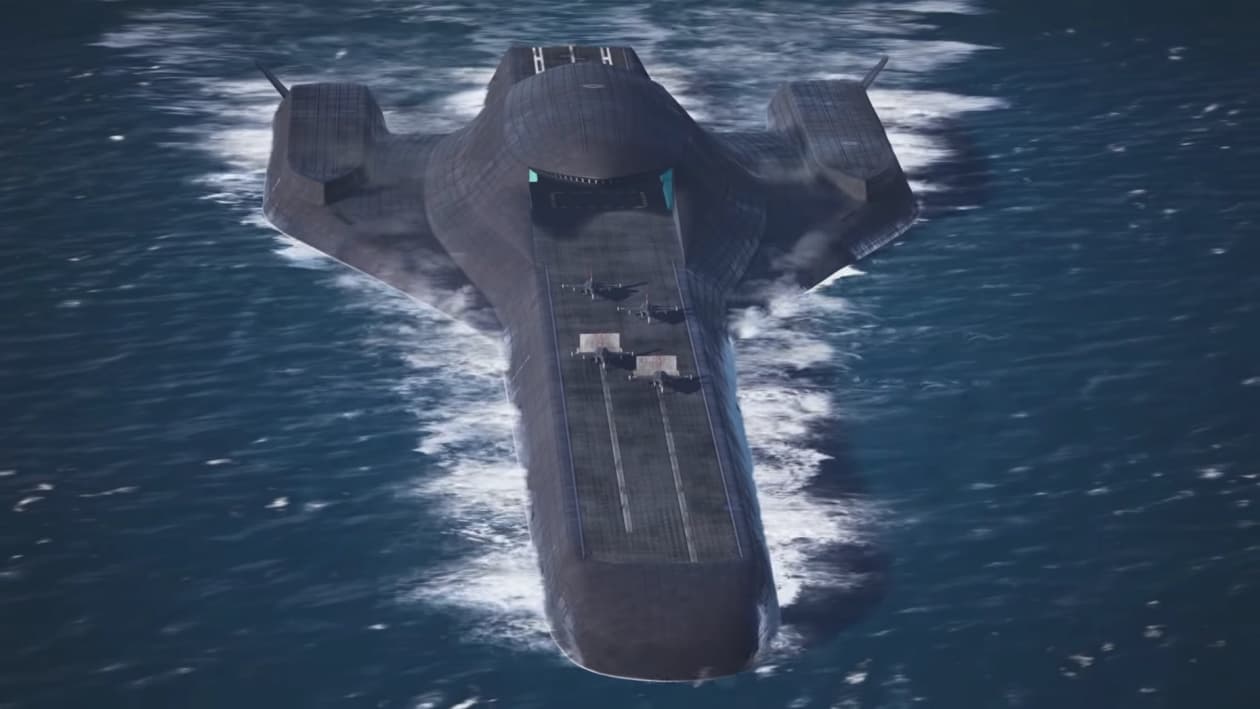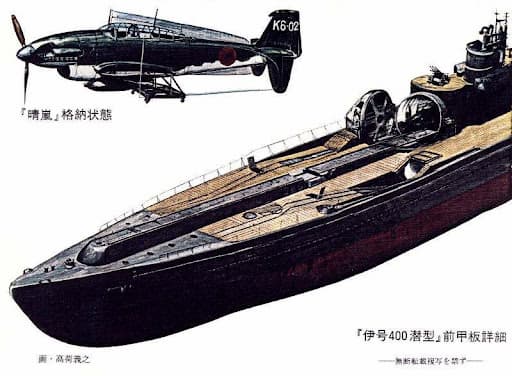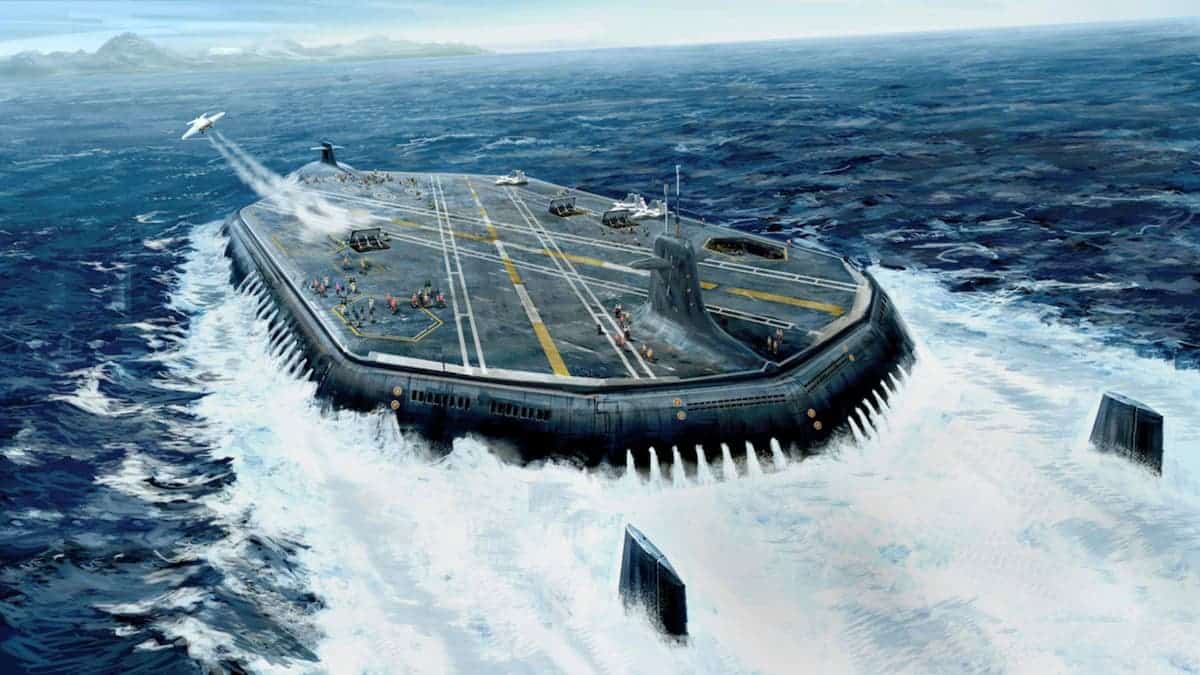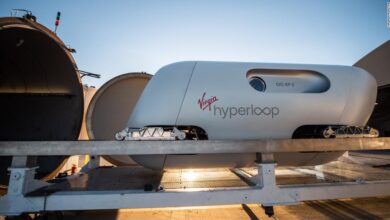America Planned to Build a Submarine Aircraft Carrier

By the 1950s, the United States was already trying to experiment with the idea of launching large-scale missiles from submarines, and it was in the early stages of the nuclear trinity’s North American flight. This concept seems so promising that some naval officers began to wonder whether they could launch small fighter jets from the hull of a submarine, just like using a missile.
Today, U.S. nuclear-powered aircraft carriers and ballistic missile submarines represent the two most potent forms of power projection exerted by any force in military history. In a short period in the late 1950s, the United States planned to combine them into a single GI Joe-style super-celestial body: an underwater aircraft carrier.
America brought the world into the atomic age.
In just four years after the United States dropped the only atomic bomb ever used in anger on the two cities of Hiroshima and Nagasaki, Japan, the United States enjoyed a monopoly on the destructive power of splitting the atom. However, on August 29, 1949, the former World War II allies of the United States in the Soviet Union conducted their nuclear test at the Semipalatinsk test site in Kazakhstan. Although the use of atomic weapons by the United States may have brought the world into the atomic age, it was the Soviet Union’s experiment that plunged the two dominant superpowers in the world into a decades-long gaze competition, which we now call the Cold War.

Nuclear Days before MAD
The tremendous destructive power of these new weapons has forced a strategic shift in global military operations. Today, it is problematic to fully understand the scope of the challenge posed by nuclear weapons to military operations at that time. Since the early 1960s, the world’s nuclear powers have been operating under the concept of Mutual Guaranteed Destruction (MAD). The premise behind MAD is simple, as President Kennedy’s Congressman and Secretary of Defense McNamara said: Any single Soviet nuclear strike will encounter a series of atomic weapons, which may lead to the Soviet Union’s full-scale launch of atomic weapons in extremely lethal circumstances.
Everyone knows that the result will be the end of life as we know it. MAD ensures no winner in a nuclear conflict, making nuclear weapons meaningless on the battlefield. If a nuclear attack can bring about the end of the world, all countries should never launch such an attack. But before the advent of the MAD doctrine, nuclear weapons were primarily regarded as any other weapon in a country’s arsenal. Because these weapons were so powerful, many military leaders began to develop comprehensive strategies around their creative use (from the development of the American nuclear triad to the use of backpack-style nuclear weapons, skiing berets. The Green Party)
Of course, not all military plans are based on finding new methods to use nuclear weapons. There is also an urgent need to develop strategies and technologies to fight after the first few discharges of nuclear exchanges. One area of particular concern is the new airpower of the United States. At the beginning of World War II, the United States only maintained 2500 military aircraft, but by the end of the war, the United States had become an aviation power. With more than 300,000 tactical aircraft and the most advanced bomber fleet on earth (B-29 Stratofortress), the United States knows that a potential World War III will be conducted mainly in the sky. But this poses a problem. How do you launch airplanes after all airports are destroyed by nuclear hell?
This problem has led to many exciting projects, including the UFO-like VZ-9 Avro car, which theoretically can take off without a runway. Another strategy, first introduced in the 1950s, required that fighter formation not need a landing runway or even a hangar targeted by enemy bombers. Instead, the U.S. Navy wants to launch fighter jets from submarines, just as they have been experimenting with launching cruise missiles.
Launching of winged cruise missiles from submarines
By the 1950s, the United States was already trying to experiment with the idea of launching large-scale missiles from submarines, and it was in the early stages of the nuclear trinity’s North American flight. This concept seems so promising that some naval officials are beginning to wonder whether they can launch small fighter jets from the hull of a submarine-like missile.
After conducting missile tests on the modified fleet ships, the Navy built two diesel-electric cruise missile submarines called the Grayback class. These submarines can carry four large Xuan Yuan 14 missiles, which are turbojet-powered cruise missiles. After the performance of the Grayback class submarine, the Navy built a Halibut class ship, a nuclear-powered submarine that can carry five such large missiles.
Unlike today’s submarine-launched ballistic missiles, these missiles are not launched when the submarine is submerged in the water. Instead, it will surface and launch a winged cruise missile through a slope extending down the bow. The flounder aircraft carrier also carried 6533 mm torpedo tubes to resist enemy ships, which made this 350-foot-long submarine a 5,000-ton war giant. Due to its S3W nuclear reactor, Halibut’s range is not limited. This is important because the Xuan Yuan XIV missile it carries has a range of only about 1,000 miles. After all, the Halibut is designed to deploy winged cruise missiles of similar size and dimensions. Focusing on manned fighters, the Navy saw an opportunity. These new submarines can be used not only for missiles they can also be used as aircraft carriers.
The plan to build submarine aircraft carriers
World War II has proven the value of aircraft carriers to the U.S. Navy. Still, after losing five of these ships and seven other aircraft carriers in the conflict, the Navy can see the value of aircraft carriers. The aircraft carrier may later be a submerged warrior.
As a model of Halibut, the U.S. Navy designed the AN-1 submarine aircraft carrier, which can carry eight fighters and is stored in two perches in the hull. To launch the fighter, the submarine will surface and guide the fighter to project vertically upward. Once the aircraft enters the launch channel, a separate thruster is placed on the plane. These thrusters will then fire, pushing the fighter into the air at sufficient speed and altitude to keep the fighter’s engine flying.
According to the Navy’s plan, the AN-1 submarine carrier can launch four fighters in just six minutes and all eight soldiers in less than eight minutes. Today’s Nimitz-class supercarriers can launch one fighter jet every 20 seconds when traveling at full speed. Still, despite this, eight fighter jets in eight minutes was considered an impressive number at the time, especially for one aircraft. An aircraft carrier that dived again after launching.
The Navy hopes to use conventional fighter jets on new submarines and consider using Grumman’s F-11F Tiger fighter jets in a short period. But the aviation industry developed so rapidly in the 1950s that the F-11 was soon considered too slow to compete in the second half of the 20th century. On the contrary, the Navy is counting on Boeing to design specially designed fighter jets that can cope with the vertical launch pressure of aircraft carrier submarines and reach speeds of Mach 3.
The submarine aircraft carrier Challenges
The proposed Boeing fighter jets never received an official name, but they were required to plan to have a total length of 70 feet, a height of 19.5 feet, and a wingspan of only 21.1 feet. They use a Wright SE-105 jet engine that produces 23,000 pounds of thrust and is operated by a single pilot.
Boeing’s plan calls for two additional SE-105 engines to be installed on the fighter jet to maintain its vertical take-off, but once it has reached a sufficient altitude, the aircraft will eject two additional engines, which will be recycled and reused.
Vertical take-off tests on other platforms have proven the feasibility of this launch method, but only half of the take-off is done by what aircraft carrier fighter jets do. Soldiers need to be able to land. This is done in a somewhat traditional way in surface ship operators, as the fighter planes land on the aircraft carrier deck and use tail hooks and lines to stop their forward power.
If there is not enough deck space for landing on the seafloor, Boeing believes that its AN-1 fighter jets will land vertically, just like they took off. In theory, this is possible, but the trials of this landing method have proved that all but the most experienced pilots are too risky. To make the engine point to the ship’s deck for a vertical landing, the pilots must turn around and look back at their shoulders when landing, for example, using a jet engine to go backward from above to a parking spot, and know their aircraft. Even the slightest mistake made would explode their aircraft.






cool, so we’re building the Alicorn? be careful who gets put in command of that